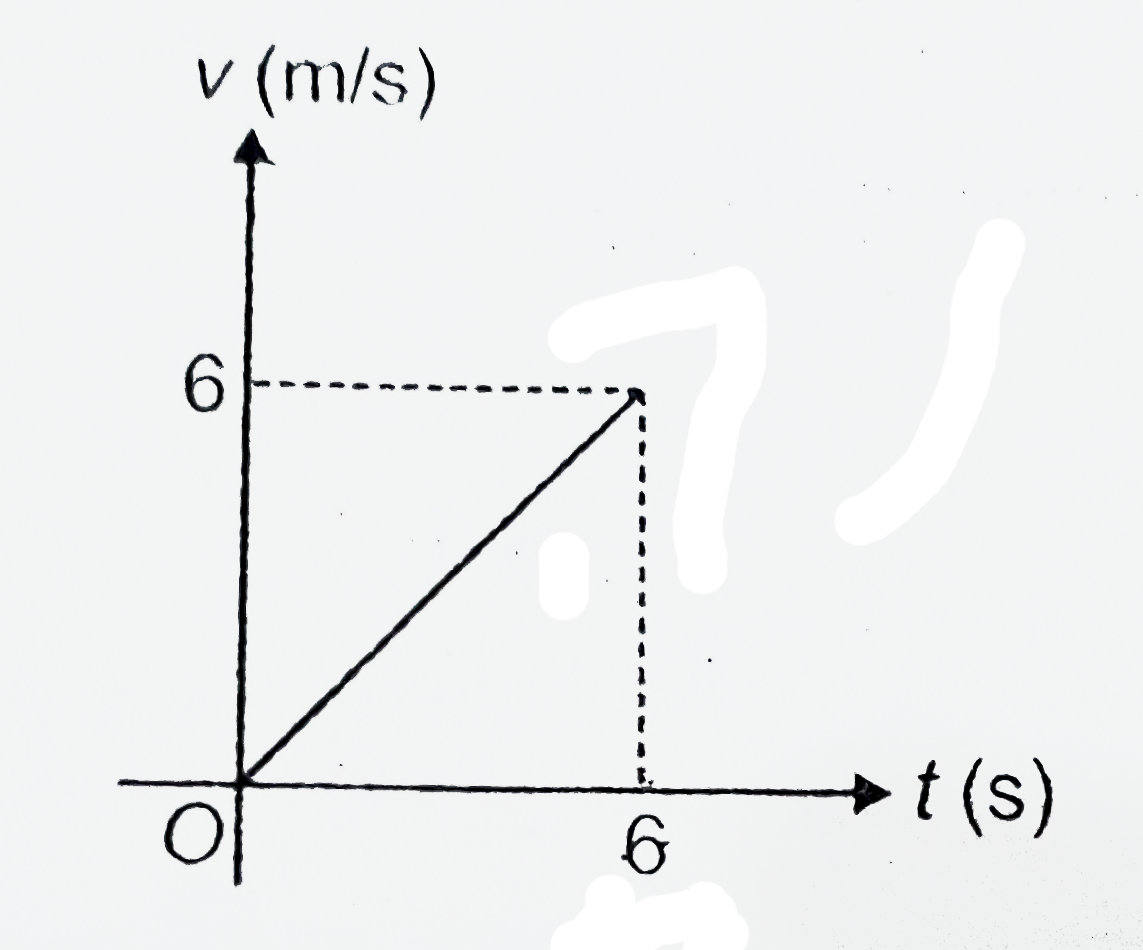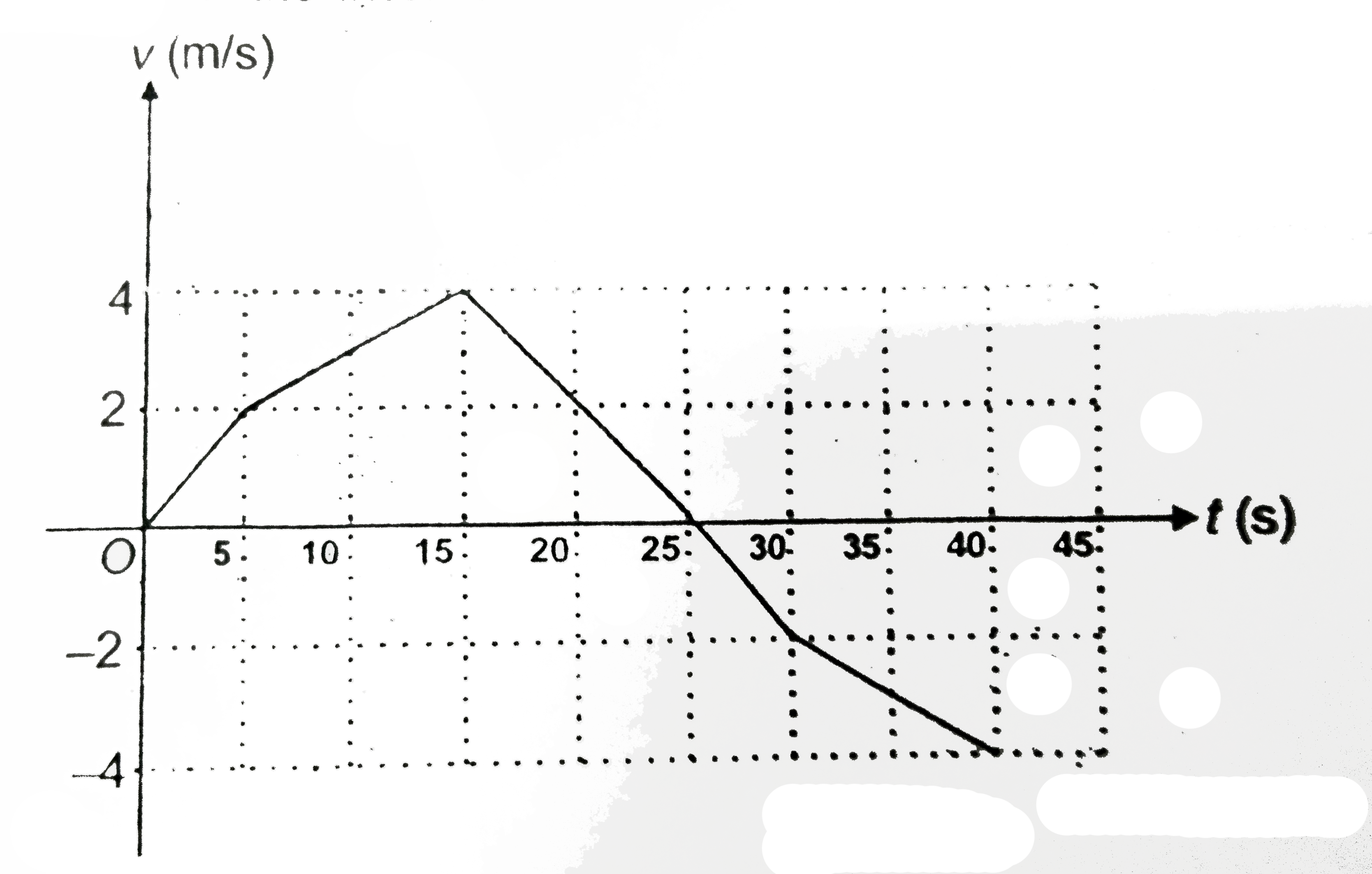The slope of velocity-time graph for uniform motion of an object is
Unity
Zero
Infinite
More than unity but has some finite value
The correct Answer is:B
To solve the question regarding the slope of the velocity-time graph for uniform motion of an object, follow these steps:
1. Understanding Uniform Motion:
- Uniform motion implies that the object is moving with a constant velocity. This means that the velocity does not change over time.
2. Velocity-Time Graph:
- In a velocity-time graph, the x-axis represents time, and the y-axis represents velocity. For uniform motion, the graph will be a straight horizontal line.
3. Analyzing the Graph:
- Since the velocity is constant, the graph will not rise or fall; it will remain flat. This indicates that there is no change in velocity as time progresses.
4. Calculating the Slope:
- The slope of a line on a graph is calculated as the change in the y-axis (velocity) divided by the change in the x-axis (time).
- Mathematically, slope = (change in velocity) / (change in time).
5. Applying to Uniform Motion:
- For uniform motion, since the velocity does not change, the change in velocity is zero. Therefore, the slope can be calculated as:
slope=0change in time=0
6. Conclusion:
- The slope of the velocity-time graph for uniform motion is zero. This indicates that there is no acceleration, and the object maintains a constant velocity.
Final Answer:
The slope of the velocity-time graph for uniform motion of an object is zero.
- Uniform motion implies that the object is moving with a constant velocity. This means that the velocity does not change over time.
- In a velocity-time graph, the x-axis represents time, and the y-axis represents velocity. For uniform motion, the graph will be a straight horizontal line.
- Since the velocity is constant, the graph will not rise or fall; it will remain flat. This indicates that there is no change in velocity as time progresses.
- The slope of a line on a graph is calculated as the change in the y-axis (velocity) divided by the change in the x-axis (time).
- Mathematically, slope = (change in velocity) / (change in time).
- For uniform motion, since the velocity does not change, the change in velocity is zero. Therefore, the slope can be calculated as:
slope=0change in time=0
- The slope of the velocity-time graph for uniform motion is zero. This indicates that there is no acceleration, and the object maintains a constant velocity.
The slope of the velocity-time graph for uniform motion of an object is zero.
Topper's Solved these Questions
- MOTION IN STRAIGHT LINEBOOK - AAKASH INSTITUTE ENGLISHCHAPTER - MOTION IN STRAIGHT LINEEXERCISE - Assignment (SECTION - B)
19 Videos
- MOTION IN STRAIGHT LINEBOOK - AAKASH INSTITUTE ENGLISHCHAPTER - MOTION IN STRAIGHT LINEEXERCISE - Assignment (SECTION - C)
7 Videos
- MOTION IN STRAIGHT LINEBOOK - AAKASH INSTITUTE ENGLISHCHAPTER - MOTION IN STRAIGHT LINEEXERCISE - Try Yourself
40 Videos
- MOTION IN A STRAIGHT LINEBOOK - AAKASH INSTITUTE ENGLISHCHAPTER - MOTION IN A STRAIGHT LINEEXERCISE - ASSIGNMENT (SECTION - D)
15 Videos
- MOVING CHARGE AND MAGNESIUMBOOK - AAKASH INSTITUTE ENGLISHCHAPTER - MOVING CHARGE AND MAGNESIUMEXERCISE - SECTION D
16 Videos
Similar Questions
Knowledge Check
Assertion : The position-time graph of a body moving uniformly is a straight line parallel to position-axis.
Reason : The slope of position-time graph in a uniform motion gives the velocity of an object.AIf both assertion and reason are trure and reason is the correct explanation of assertion.BIf both assertion and reason are true but reason is not the correct explanations of assertion.CIf assertion is true but reason is false.DIf both assertion and reason is false
What is the nature of the distance-time graphs for uniform and non-uniform motion of an object ?
View SolutionWhich of the following velocity-time graphs represent uniform motion
View SolutionDraw the shape of the velocity-time graph for a body moving with (a) uniform velocity, (b) uniform acceleration.
View Solution(A): Velocity-time graph for an object in uniform motion along a straight path is a straight line parallel to the time axis.
(R ):In uniform motion of an object velocity increases as the square of time elapsed.
View SolutionGraphs are very useful to represent a physical situation. Various quantities can be easily represented on graphs and other quantites can be determined from the graph. For example the slope of velocity-time graph represents instantaneous acceleration. For a motion with constant acceleration slope of velocity-time graph is constant. If acceleration is changing with time, slope will change and thus velocity-time graph will be a non-linear curve. Further the area of velocity-time graph gives displacement.
For the given velocity-time graph the displacement of the object between t = 2 s to t = 4 s is

View SolutionGraphs are very useful to represent a physical situation. Various quantities can be easily represented on graphs and other quantites can be determined from the graph. For example the slope of velocity-time graph represents instantaneous acceleration. For a motion with constant acceleration slope of velocity-time graph is constant. If acceleration is changing with time, slope with change and thus velocity-time graph will be a non-linear curve. Further the area of velocity-time graph gives displacement.
For the above situation let t1 be the time of accelerated motion and t2 be the time or retarded motion, then the correct relation is
View SolutionGraphs are very useful to represent a physical situation. Various quantities can be easily represented on graphs and other quantites can be determined from the graph. For example the slope of velocity-time graph represents instantaneous acceleration. For a motion with constant acceleration slope of velocity-time graph is constant. If acceleration is changing with time, slope with change and thus velocity-time graph will be a non-linear curve. Further the area of velocity-time graph gives displacement.
A car starts from rest with a constant acceleration a1 for some time and attains a velocity v0. Then it immediately retards at a constant rate a2 to rest. The total time to journey is t0 Identify the correct velocity-time graph
View Solution

